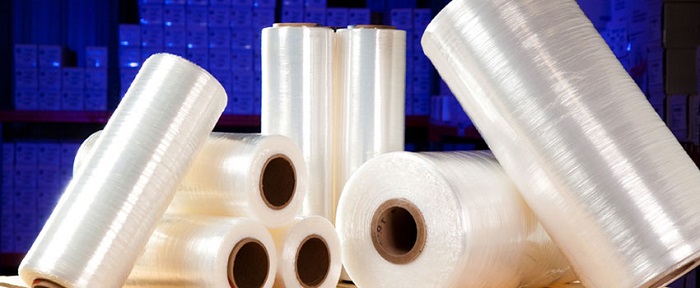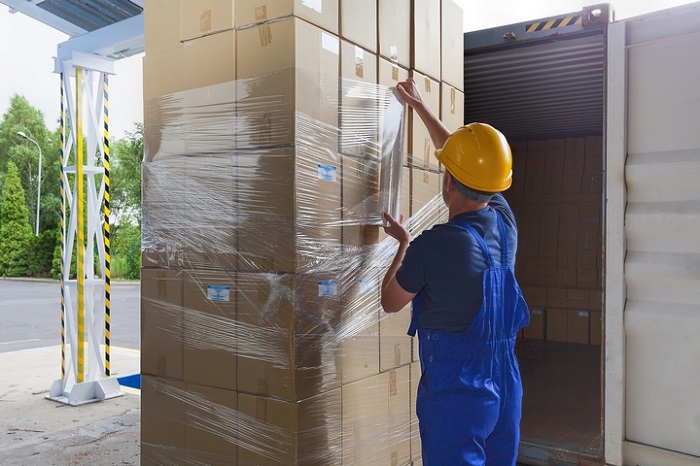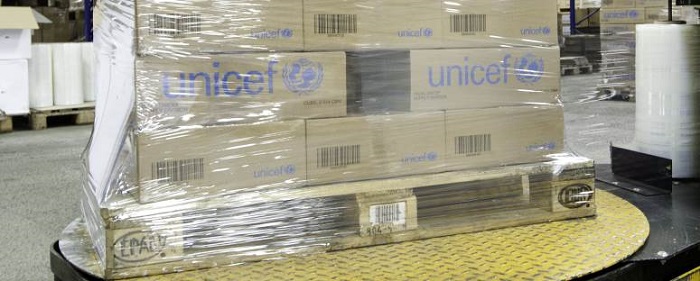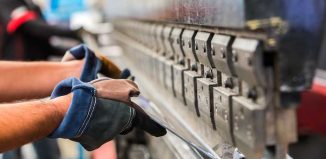Packing items at home or in an industrial environment has seen a great benefit from stretch wrap. This elastic film is a combo of resin (which is essentially polymeric feed stock), tackifiers, a pigment to make it either opaque or tinted and UV resistant additives. Stretch wrap film is available as cast or blown film. Cast plastic film is made by first melting the thermoplastic material which goes through a flat die onto a chill roll where it solidifies. The melted thermoplastic material of the blown film goes through a circular die with the help of a large air bubble blown inside. The difference between the two is that blown film is opaque and it makes a lot more noise than cast film during the unwrapping process.

Source: Safepackaginguk
Benefits
Efficient
Stretch film wrap is a versatile material that offers visibility making it easy for packages to be scanned. With stretch wrap film you won’t have to fiddle around with an item to figure out where its bar code is nor will the scanner have issues reading it through the film. Of course, the see-through properties will depend on the type of stretch film you use.
Cost-effective
Since there is no equipment needed to use this type of product, it makes packing a box or furniture more affordable. Unlike heat shrink film, the stretching and wrapping doesn’t require special equipment and it also takes less time to wrap an item. Stretch film wrap is also recyclable so you are definitely using an eco-friendly solution here.
Offers Protection
With plastic film wrap your items will be free of moisture, dust and dirt. There are also stretch wraps that offer UV protection too so you won’t have to worry if the sun is going to affect the colour of your sofa or armchair. You can also conceal your items if you go with blown plastic stretch wrap which can help reduce the chances for an item to get stolen.
Uses
The most common use of stretch film wrap is palletising boxes but plastic stretch wrap can also be used to wrap buckets full of dry goods, paint and other liquids. Canned beverages, electronics such as blood pressure monitors and handheld GPS’s and mulch are often wrapped in film wrap alongside bricks, tubes, live trees and plants. This film is often used to keep big paper formats together, to prevent carpets from unrolling and as a form of protection when transporting windows. You can also see plastic stretch wrap being used to pack tires, wood and clay with canned beverages, wire reels and medical products being wrapped in it as well.

Source: Theunionlabelblog
How to Use Stretch Film
Moving
When moving from one place to another it’s important to have your furniture pieces safe. Using plastic stretch film for this purpose will require having dry and clean furniture in order to ensure that moisture or dirt don’t get trapped. Removable parts (if any) need to be taken off so the furniture piece is easier to wrap and more compact too. You can place the removable parts in a box.
Wooden or leather pieces of furniture need to be wrapped with paper padding in order to allow for breathability and extra protection too. Cover items with stretch wrap by starting from the bottom and going around the item upwards until you have it completely wrapped. Do this by having your fingers placed in the empty space of the roll and letting it unwrap when going around the furniture piece. You should put extra foam and cardboard pieces on the corners in order to keep them protected.

Source: Transpack
Palletising
Whilst wrapping a pallet may seem like a pretty straightforward process, it actually requires certain things to be done in order to ensure that the items are placed in a compact manner and that the load doesn’t shift. In order for a pallet to be wrapped, you need to make sure you have a roll of the corresponding size. In this case, the size of the roll should match the size of the items that are at the top of the pallet.
- Start by placing the items so that they are as close to each other as possible to prevent them from moving when you’re palletising. Before you start wrapping the items, make sure to attach the wrap to the pallet. Do this by scrunching up the end of the wrap like a rope and tying it around a corner.
- Start wrapping around the same way you would wrap a furniture piece but now make sure you cover 50% of the previous layer each time you go around the items on the pallet. For a more stable structure, you can add one more layer going from top to bottom, the same way you did when you were going from the base to the top of the pallet. Once done, tear the wrap and fold the end underneath one of the edges.












